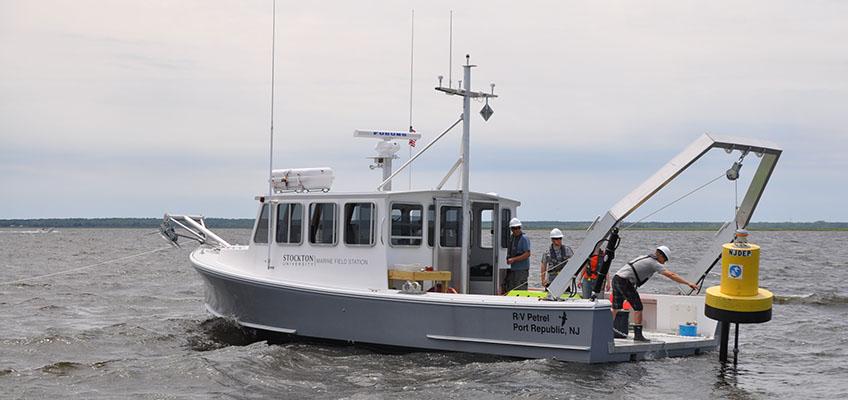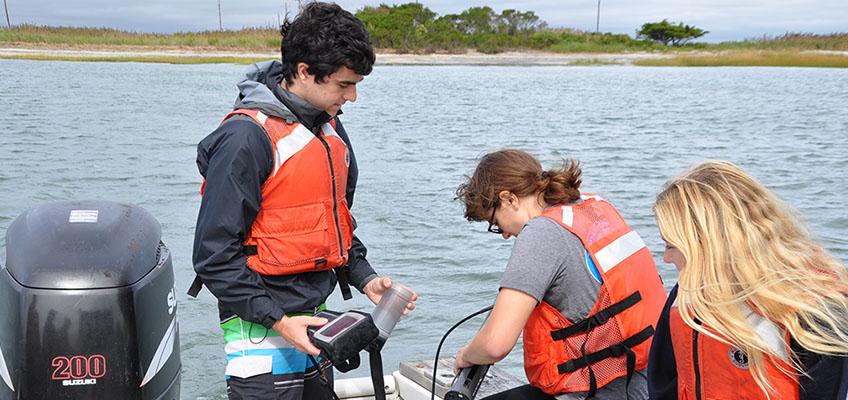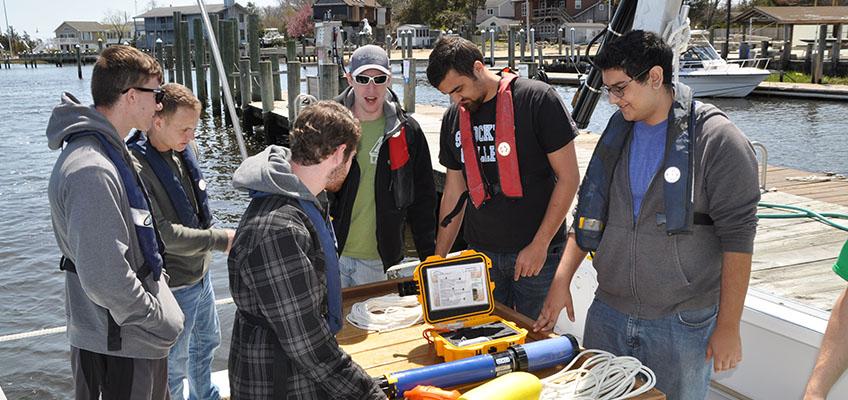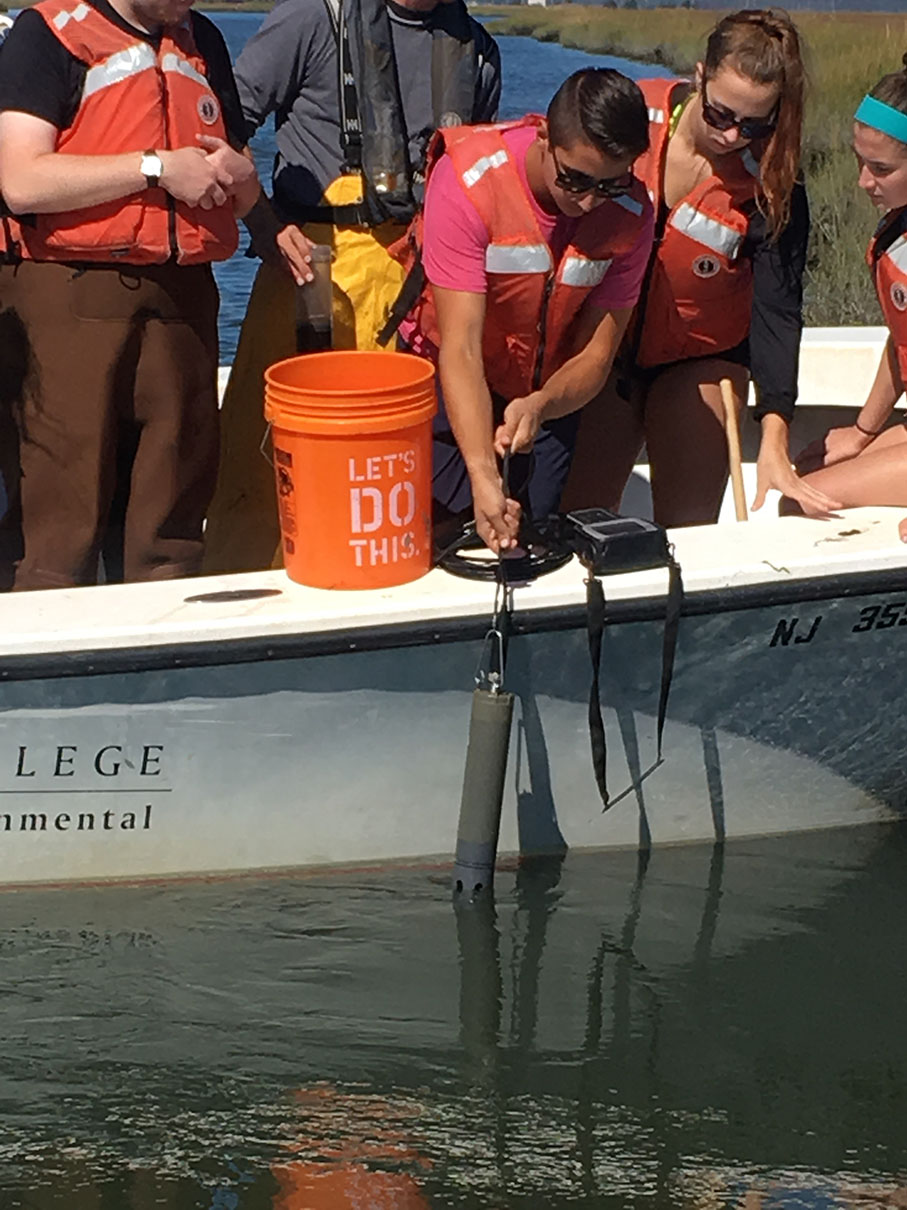Marine Chemistry




The marine chemistry research program is based largely on chemical analysis of samples
from a variety of marine environments. Ongoing projects include measurements of salinity
(chlorinity), pH, alkalinity and several nutrients (such as phosphate and silica)
in the Great Bay-Mullica River estuary. Redox potential and sulfate reduction to sulfide
has been monitored in the past at several hypoxic or anoxic sites in the Bay. These
and other projects are planned on a semester-by-semester basis.
The marine chemistry program also works on seawater aquarium chemistry and general
physical and chemical modeling of closed seawater systems. Such systems (e.g. aquaria
and mariculture facilities) have a choice of employing natural seawater or preparing
their own, artificial seawater. Those that use artificial seawater - such as Adventure
Aquarium in Camden - find it is more economical than transporting large quantities
of uncontaminated ambient seawater to the facility. Managing these additions such
that ion concentrations are in the same basic proportions as in natural seawater requires
regular monitoring and modeling of these environments.
Faculty and student research projects
- Chemical and Nutrient Trends Along a Salinity Gradient
- Water Quality in the Bass River Borrow-Pit Depression
For more information on the Marine Chemistry program, contact Dr. Gordan Grguric.
<<< Back to Main Research Page

Water quality data is collected during a sampling trip, Great Bay, NJ (Photo Credit: Steve Evert).


